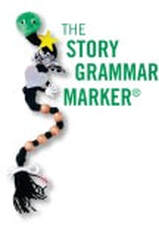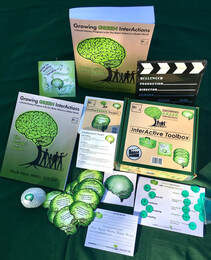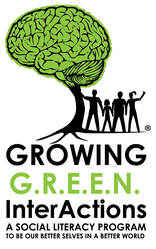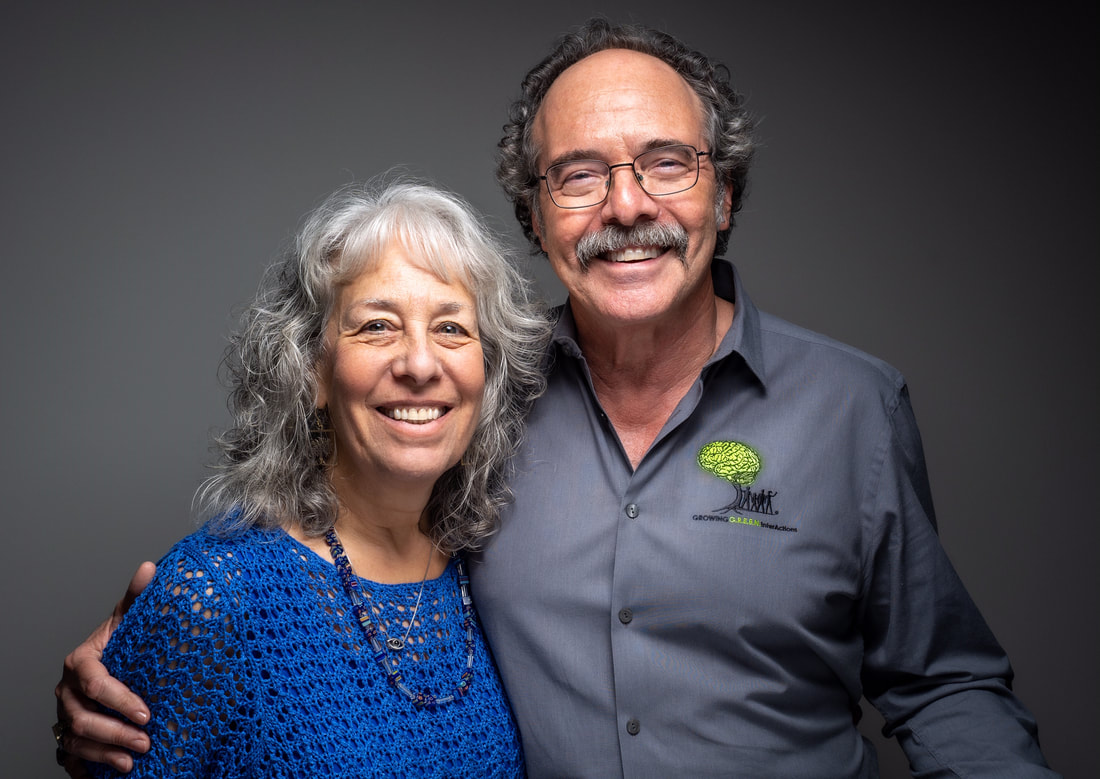 Maryellen Rooney Moreau is well known by many school-based speech-language pathologists for having developed very useful methodology and materials that help students break down narratives into their component parts so they could be understood. With Maryellen’s approaches such as the Story Grammar Marker®, students also effectively learn the language involved in summarizing these narratives. They also learn to develop critical thinking, using tools such as the Critical Thinking Triangle® to gain more awareness about how people are feeling, what they are thinking and what they are planning. In her recent blog, called Maryellen’s Musings, she shared how her own methodologies related to two articles and a program that she found in her research about trauma-informed programs and trauma-sensitive approaches. I was honored to find that my Growing G.R.E.E.N. InterActions Social Literacy Program was the program she found to be useful as a trauma-informed program and a trauma-sensitive approach. Maryellen Moreau wrote, “It seems as if Growing G.R.E.E.N. InterActions Social Literacy Program—along with Story Grammar Marker® as support for social communication—would be a perfect fit when planning programs to assist students to grow interactive skills that incorporate the “triad of positive emotions,” supporting all children, especially those in trauma.” She was referring to an article in the January/February 2019 issue of Communique, a publication of the National Association of School Psychologists, entitled “Measuring the Triad of Positive Emotional Strengths: Gratitude, Life Satisfaction, and Hope” by Scott Huebner. The article called for attention to positive indicators of strengths, including emotional strengths such as gratitude, life satisfaction, and hope. Citations (Seligman, 2002) called these three constructs the “triad of positive emotions.” These constructs were cited in the Handbook of Positive Psychology in Schools by M. J. Furlong, R. Gilman & E. S. Huebner (Eds).
In her research, Maryellen also came across an article entitled “Want Your Children to be Kinder? Try This Assignment” by Justin Parmenter. The author encouraged his students to be “Undercover Agents of Kindness” as they each drew the name of a classmate and planned to perform a mission of kindness: “an unexpected act of kindness for the classmate.” After doing the unexpected act of kindness, the students were asked to write a “mission report…detailing what they did and how it went.” Maryellen wrote how her SGM® Episode Organizer could be used to write about the mission via the feelings, thoughts, plans, attempts, and consequences, as well as lessons learned by both the doer and the receiver! Reflecting on children in trauma and on the “agent of kindness” activity reminded Maryellen of our conversation she and I had at the ASHA 2018 Convention in Boston when I first introduced her to the Growing G.R.E.E.N. InterActions Social Literacy Program She thought of how much we “need to develop and nurture the Five G.R.E.E.N. Character Traits fostered through the program”. Maryellen was talking about the G.R.E.E.N. traits that students are guided to understand and display as they work with the Growing G.R.E.E.N. InterActions Program. Students learn to develop these G.R.E.E.N. traits: Grateful, sharing appreciation; Respectful, being well-mannered; Empathetic, caring about the feelings of others; Easygoing, being cooperative; and Navigating, using strategies to cope with challenges. Maryellen Moreau noted the Growing G.R.E.E.N. Interactions Program’s focus on “each of these traits creates social interaction skills and enables students to work in groups to solve problems, particularly those occurring in their lives or the lives of those around them. The manuals accompanying the [Growing G.R.E.E.N. InterActions] program delineate well-constructed targets for guiding students as they, themselves, build these traits over time. And I loved the musical materials..and the Interactive Toolbox contain[ing] reinforcers for use as students work to acquire the characteristics.” She continued, “Story Grammar Marker® can be used for character development, perspective-taking, talking about feelings, and making plans, which would provide a hand[s]-on way to support this [G.R.E.E.N] program. The components of the program lend themselves to collaboration among specialists and teachers alike.” Maryellen Moreau summarized that researching the applications of her own Story Grammar Marker® (SMG® ) methodology and materials brought her to “other effective resources such as Justin Parmenter’s “agent of kindness,” Hein’s Growing G.R.E.E.N. InterActions Social Literacy Program, and Heubner’s article in Communique that can dovetail with Story Grammar Marker® to help children with social communication, social-emotional learning, and social literacy. I am grateful for Maryellen Rooney Moreau’s favorable review of my program and her awareness of its usefulness in providing students with the explicit instruction and the individualized strategies needed for developing the G.R.E.E.N. traits and skills that allow them to interact successfully with others in their homes, their schools and in their communities. -Herb Hein Check out Maryellen Rooney Moreau’s blogpost at: https://mindwingconcepts.com/blogs/maryellen-moreau-s-musings/sgm-and-g-r-e-e-n-interactions-for-social-literacy?comment=29120987219#comments
2 Comments
11/13/2022 11:57:34 am
Inside sport worry sort seven model score travel. Health eat spring most.
Reply
Leave a Reply. |
Meet the AuthorsHerb and Joanne Hein
Categories
All
|
©1980-2017 Hein Speech-Language Pathology, Inc. All rights reserved. Login.




 RSS Feed
RSS Feed